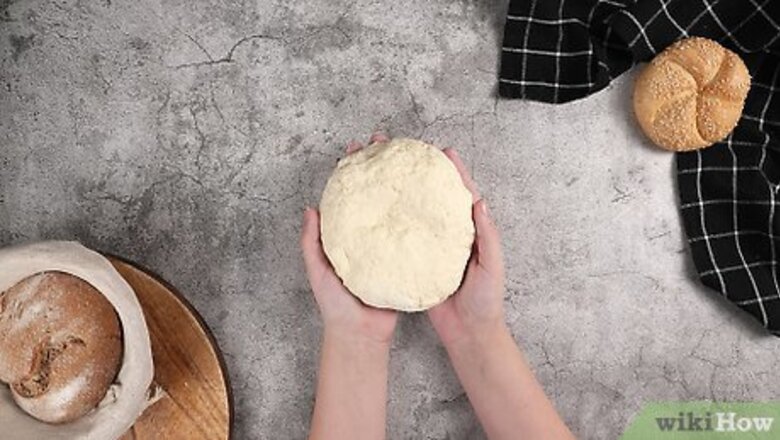
views
Shaping a Rectangular Loaf
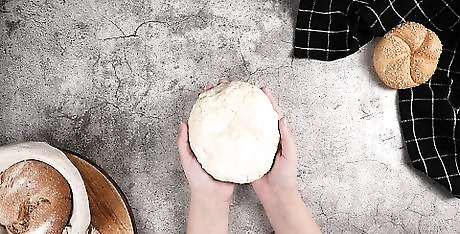
Form the dough into a round shape. Begin by shaping the risen dough into a circular shape. Use your hands to smooth it once it is round. The dough should still be plump on top and not flat.

Let the dough rest for a few minutes. After it has been formed into a round shape, allow it to sit for a few minutes. Allowing it to sit will let the gluten relax, which will make the dough easier to shape.
Flatten the dough into a rectangle. Take the heels of your hands and begin to flatten the circular shape into a rectangle. Use your hands to form four corners. The shape does not have to be perfect—it just needs to be recognizably rectangular. Sprinkle some flour under the dough if it sticks. Do not, however, use a lot of flour or the dough will not stick to itself when it comes time to fold it.
Fold the top and bottom thirds of the dough. Now that the dough is in the shape of a rectangle, fold a third of the dough on top of itself. Then, fold the bottom third down so that it overlaps the other layers. Pinch the dough where the layers meet to close up the gaps. Fold it in half again if the dough still seems loose. The dough needs to be taut to turn out well.
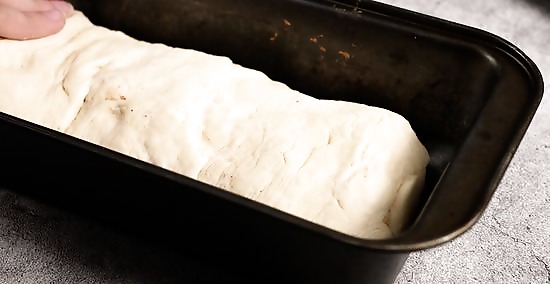
Put the dough face down into a pan. Grease the pan with cooking oil or butter. If you are making white or wheat bread, use coarse cornmeal to prevent the dough from sticking. Gently roll the dough into the pan. The part with the seams should face down in the pan. The smooth, taut surface should be facing up.

Slash the dough with a knife when it begins to rise. You are ready to bake the dough when it starts to rise slightly above the top of the pan. When that happens, slash a vertical line through the middle of the dough. This will allow the dough to rise evenly as it bakes. You can also use a razor blade if you don’t have a serrated knife.
Making a Rounded Loaf
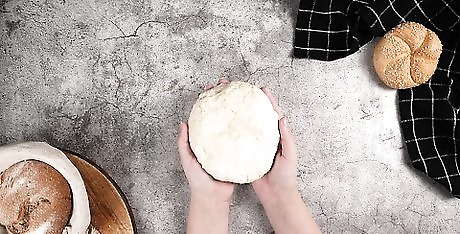
Shape the dough into a sphere. Take the risen dough and begin to form it into a spherical shape. When it has rounded out, smooth out the dough. The top of the dough should be plump and slightly rounded as well. It does not need to be perfectly shaped just yet.
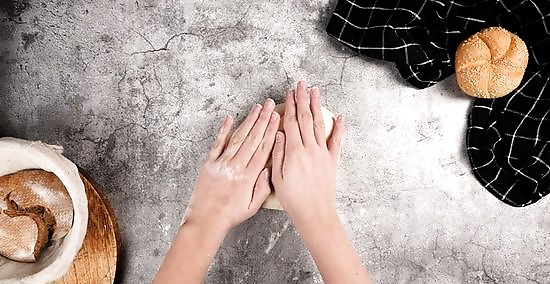
Push and flip the dough. Once the dough has been rounded, push your fist into the center of the dough. Leave the indentation from your fist in the dough. Then, flip it over to the other side.

Continue to shape and smooth the dough. Rotate the dough as you continue to shape it. Smooth it out as you continue to shape. Once you are satisfied with the shape, allow it a few minutes to rise before putting it in the pan to bake. Make sure that you grease the pan with cooking oil or butter before baking. If you are baking white or wheat bread, use coarse cornmeal instead of oil or butter.
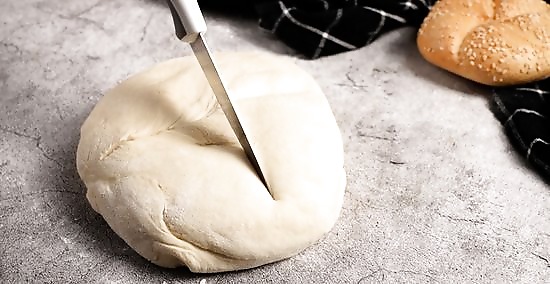
Create a Coburg loaf. To create a Coburg loaf, begin with the rounded shape. Use a knife to make a deep cut down the center of the loaf. Make another cut in perpendicular to the first cut, forming a cross. Then, bake as usual.
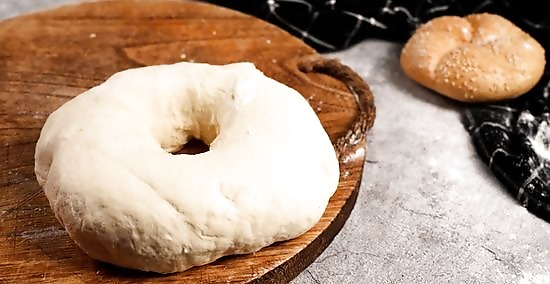
Make a ring loaf for a variation on a rounded loaf. First, insert 2 to 3 fingers into the center of the loaf. Then, use your hands to push the hole outward on all sides. Once you’re satisfied with the size of the hole, smooth out the edges of the center hole. Put a towel over the loaf and allow it to rise for a few minutes before putting it into a pan to bake.
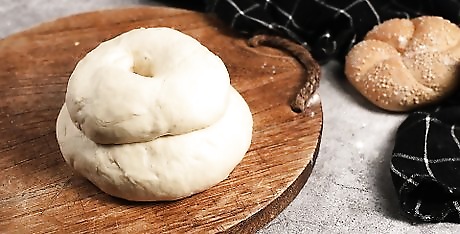
Make a Cottage loaf with two spheres. To make a Cottage loaf, start with the rounded dough you’ve just created. Make another, slightly smaller, rounded dough ball. Put the smaller sphere on top of the larger rounded dough. Next, put 2 fingers through the center of a dough. Use a wooden spoon or dowel to extend the hole into the second dough. Put a towel over the loaf, and allow it to rise for a few minutes before putting it into a pan to bake. The holes will allow the 2 dough balls to weld together during baking.
Forming a Bloomer
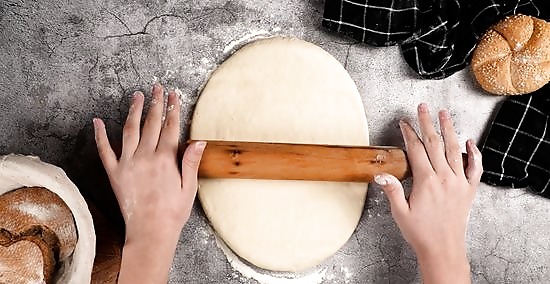
Use a rolling pin on the dough to create a rectangular shape. A “bloomer” means that the dough is in a cylindrical shape with slightly tapered ends. To achieve this shape, begin by rolling the dough out into the shape of a rectangle. The corners of the dough, however, should still be rounded. When you are done, the dough should be no longer than 14 inches (35.5 cm) and about 1 to 1 ½ inches (2.5 to 3.8 cm) thick.
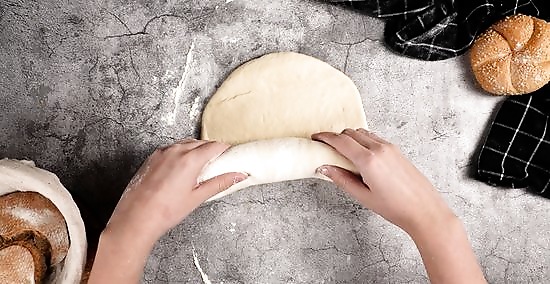
Roll up the dough. Choose 1 side of the dough and begin to roll it vertically. Roll it on top of itself so that it becomes gradually thicker. It should be about 4 (10 cm) or 5 inches (12.7 cm) thick when you are done rolling. Tuck the ends to close up any space, and smooth out the dough when you are done rolling.
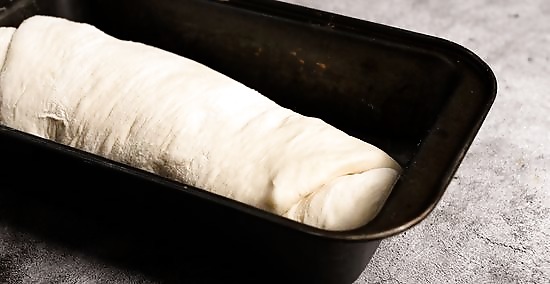
Allow the dough to rise. Put the rolled-up dough onto a baking sheet that has been lightly greased. Put a kitchen towel on top of the dough. Allow it to rise for a few minutes.
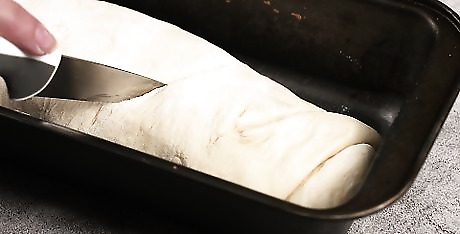
Cut diagonal slashes into the dough. After it has risen a bit more, use a knife to cut slashes into the top of the dough. Cut diagonal marks that are about 1 ½ inches apart. Typically, you will be able to fit in 6 slashes.




















Comments
0 comment